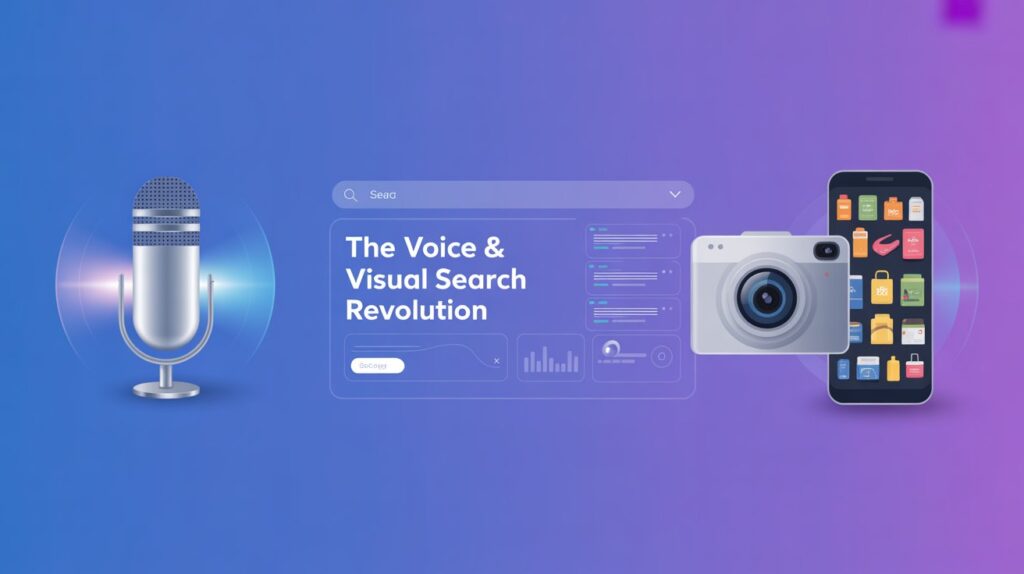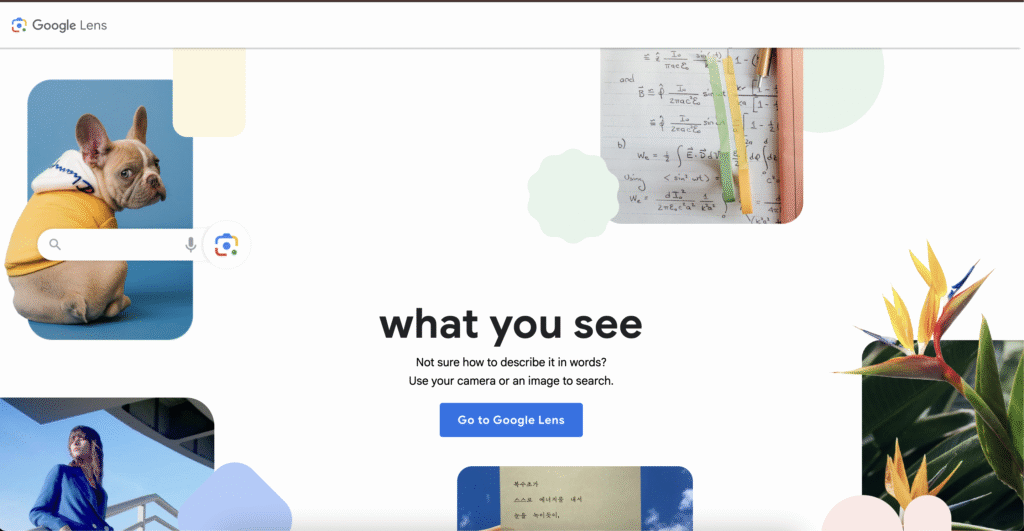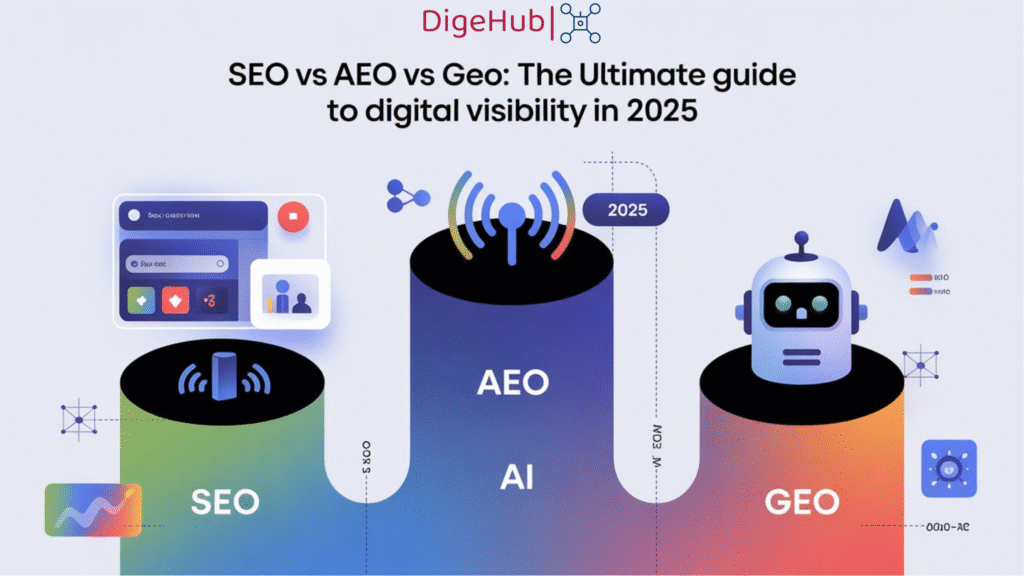The Rise of Voice and Visual Search: How to Adapt Your SEO Strategy for 2025

The way people search online has evolved beyond just typing into Google. With the rise of voice assistants like Alexa, Siri, and Google Assistant and visual search tools like Google Lens and Pinterest Lens, consumers expect faster, more intuitive results.
For marketers and businesses, this means rethinking traditional strategies and aligning with AI-powered SEO. Just like mobile-first indexing reshaped the digital marketing landscape, voice and visual search optimization are now critical to staying visible in 2025.
- The Rise of Voice and Visual Search: How to Adapt Your SEO Strategy for 2025
- What Is Voice Search and Why Is It Growing?
- What Is Visual Search and How Does It Work?
- The Impact of AI on Search Behavior
- How to Optimize Your SEO Strategy for Voice Search
- How to Optimize Your SEO Strategy for Visual Search
- Voice vs Visual Search: A Quick Comparison Table
- Why Businesses Can’t Ignore These Trends
- Internal SEO Opportunities with Voice and Visual Search
- Future of SEO: Preparing for AI-Powered Discovery
- FAQs
What Is Voice Search and Why Is It Growing?
Voice search allows users to speak their queries rather than typing. According to Google, 27% of the global online population is already using voice search on mobile.
Some key reasons why voice search is growing:
- Hands-free convenience for multitasking.
- Faster query input compared to typing.
- More conversational and natural way of searching.
If your business is already investing in SEO services, adapting to conversational SEO strategies is the next step to future-proof your visibility.
What Is Visual Search and How Does It Work?

Visual search uses AI image recognition to identify objects within photos and deliver search results. For example:
- Google Lens can identify products, plants, landmarks, or text.
- Pinterest Lens lets users find similar products just by uploading a picture.
For eCommerce and digital marketing businesses, visual search SEO creates new opportunities to rank beyond text. Imagine a user pointing their camera at a sneaker — and your product shows up instantly.
The Impact of AI on Search Behavior
AI-driven search engines now focus on understanding intent rather than just keywords. This shift requires businesses to:
- Create structured, semantic content that answers questions directly.
- Use high-quality visuals with descriptive alt text.
- Implement schema markup for better indexing.
If you’re looking to combine AI with design, UI/UX services can help ensure your content and visuals are optimized for these new search trends.
How to Optimize Your SEO Strategy for Voice Search
To succeed with voice search SEO in 2025, marketers should:
1. Target Conversational Queries
Most voice searches are questions. Instead of targeting short keywords like “digital marketing agency”, optimize for phrases like:
- “What is the best digital marketing service in Chennai?”
- “How do I improve my website SEO rankings?”
2. Optimize for Featured Snippets
Since voice assistants often read out the Position Zero result, aim for direct, structured answers.
3. Improve Local SEO
Nearly 58% of voice searches are local. If you’re a regional business, like offering web development in Chennai, make sure your Google Business Profile is updated.
How to Optimize Your SEO Strategy for Visual Search
1. Use High-Quality Images
Ensure product and blog images are crisp, descriptive, and optimized with alt text.
2. Add Descriptive Metadata
Use image sitemaps and detailed file names (e.g., “seo-strategy-2025.png” instead of “image1.png”).
3. Implement Schema Markup
This makes it easier for search engines to interpret your images.
4. Integrate With eCommerce Platforms
If you’re selling products, visual search can drive sales. SEO guide can integrate these capabilities seamlessly.
Voice vs Visual Search: A Quick Comparison Table
| Feature | Voice Search | Visual Search |
|---|---|---|
| User Behavior | Conversational, question-based | Image-driven, object recognition |
| Best Use Cases | Local SEO, FAQs, hands-free search | eCommerce, product discovery |
| Optimization Tactics | Long-tail keywords, snippets, local | Alt text, schema, high-quality images |
Why Businesses Can’t Ignore These Trends
Adapting to voice and visual search SEO is no longer optional. Brands that fail to evolve risk losing visibility. Businesses investing in cloud-based solutions and AI-driven marketing are already gaining an edge.
Think of it this way: in 2010, mobile optimization was a “nice-to-have.” In 2025, voice and visual search will define market leaders vs laggards.
Internal SEO Opportunities with Voice and Visual Search
If you’re already exploring services like social media marketing or SEM campaigns, layering voice and visual search optimization will amplify ROI.
Digehub also offers international SEO solutions tailored for USA, Netherlands, and Australia to help businesses scale globally.
Future of SEO: Preparing for AI-Powered Discovery
The future of SEO lies in AI integration, multimodal search, and predictive user behavior. To stay ahead, focus on:
- Building structured, intent-driven content.
- Optimizing for multiple formats (text, voice, image, video).
- Partnering with a professional SEO agency that understands these evolving trends.
FAQs
1. What is the difference between voice search SEO and traditional SEO?
Voice search SEO focuses on conversational queries and long-tail keywords, whereas traditional SEO targets broader typed keywords.
2. How do I optimize for visual search?
Use high-quality images, descriptive alt text, and structured metadata so search engines can understand your visuals.
3. Why is voice search important for local businesses?
Because most voice searches are local in intent, like “near me” queries, making it crucial for local SEO optimization.
4. Which industries benefit most from visual search?
ECommerce, retail, fashion, travel, and food industries see the most growth from visual search integration.
5. How will AI impact SEO in the next 5 years?
AI will shift SEO towards predictive search, semantic understanding, and multimodal ranking factors, requiring advanced strategies.
The future of SEO is voice and visual-first. If your brand wants to stay ahead, it’s time to upgrade your strategy. At Digehub, we specialize in SEO, digital marketing, and AI-driven solutions to help businesses dominate search in 2025.
Ready to optimize your business for the future of search? Contact us today and let’s grow together.


